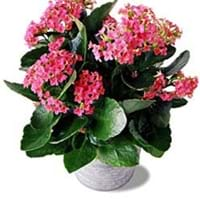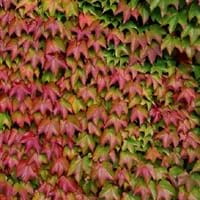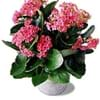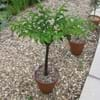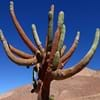Life Span
Annual or Biennial
Perennial
Type
Flowering Plants, Shrub
Vines
Origin
Not Available
United States, Mexico
Types
Kalanchoe velutina, Kalanchoe hildebrantii
Not Available
Number of Varieties
Not Available
Habitat
Deciduous forests, Tropical regions
Deciduous forests
USDA Hardiness Zone
Not Available
4-10
AHS Heat Zone
Not Available
12 - 1
Sunset Zone
Not Available
A1, A2, A3, H1, H2, 1a, 1b, 2a, 2b, 3a, 3b, 4, 5, 6, 7, 8, 9, 10, 11, 12, 13, 14, 15, 16, 17, 18, 19, 20, 21, 22, 23, 24
Habit
Not Available
Vine/Liana
Minimum Height
Not Available
Minimum Width
Not Available
Flower Color
Not Available
Ivory
Flower Color Modifier
Not Available
Bicolor
Fruit Color
Not Available
Not Available
Leaf Color in Spring
Not Available
Green, Dark Green, Sandy Brown, Burgundy
Leaf Color in Summer
Not Available
Green, Dark Green, Sandy Brown, Burgundy
Leaf Color in Fall
Not Available
Green, Dark Green, Sandy Brown, Burgundy
Leaf Color in Winter
Not Available
Light Green
Leaf Shape
Oval with toothed margin
Maple shaped
Plant Season
Not Available
Not Available
Sunlight
Not Available
Full Sun, Partial Sun
Growth Rate
Not Available
Very Fast
Type of Soil
Not Available
Clay, Loam, Sand
The pH of Soil
Not Available
Acidic, Neutral, Alkaline
Soil Drainage
Not Available
Well drained
Bloom Time
Not Available
Summer
Repeat Bloomer
Not Available
Yes
Tolerances
Not Available
Wet Site
Where to Plant?
Container, Ground
Container, Ground
How to Plant?
From bulbs, Vegetative Reproduction
Root Division, Stem Cutting
Plant Maintenance
Medium
Medium
Watering Requirements
Keep ground moist
Keep the Soil well drained
In Summer
Moderate
Lots of watering
In Spring
Moderate
Moderate
In Winter
Average Water
Average Water
Soil pH
Not Available
Neutral
Soil Type
Loamy, Well drained
Well drained
Soil Drainage Capacity
Not Available
Well drained
Sun Exposure
Not Available
Full Sun, Partial shade
Pruning
Prune for shortening long shoots, pruning needed for strong structure
Cut off the flower stalks at the base of the plant, Prune after flowering
Fertilizers
slow-release fertilizers
10-10-10 diluted liquid fertilizer, High phosphorus
Pests and Diseases
Bacteria wilt, Crown gall, Mosaic viruses, Red blotch
Alternaria Leaf Spot, Blight, Leaf curl
Plant Tolerance
Shade areas, Shallow soil
Heat Tolerance, Shade areas
Flowers
Showy
Insignificant
Flower Petal Number
Not Available
Single
Showy Fruit
Not Available
No
Edible Fruit
Not Available
No
Fragrant Flower
Not Available
No
Fragrant Fruit
Not Available
No
Fragrant Leaf
Not Available
No
Fragrant Bark/Stem
Not Available
No
Showy Foliage
Not Available
No
Showy Bark
Not Available
No
Foliage Texture
Bold
Fine
Foliage Sheen
Not Available
Matte
Invasive
Not Available
Yes
Self-Sowing
Not Available
Yes
Attracts
Bees, Butterflies
Flea beetles, Insects
Allergy
breathing problems, sneezing
Skin irritation
Aesthetic Uses
Beautification, Bouquets
Decorating walls, Showy Purposes
Beauty Benefits
For treating wrinkles, Improve skin tone
Acne, Anti-ageing, Good Cleanser
Environmental Uses
Food for insects, Very little waste
Air purification, Very little waste
Medicinal Uses
Immunity, Inflammation, Jaundice, Kidney Stones, Neurodegenerative Disorders, Piles
Not Available
Part of Plant Used
Bark, Fruits
Leaves, Vines
Other Uses
Making Perfumes, Used as Ornamental plant
Basketary, Showy Purposes, Used as Ornamental plant
Used As Indoor Plant
Yes
Yes
Used As Outdoor Plant
Yes
Yes
Garden Design
Not Available
Edible, Vegetable
Botanical Name
KALANCHOE 'Mirabella'
Parthenocissus tricuspidata
Common Name
Kalanchoe
Boston Ivy, Japanese creeper, Grape ivy, Japanese ivy, Woodbine
In Hindi
Kalanchoe
Boston Ivy
In German
Kalanchoe
Dreispitzige Jungfernrebe, Wilder Wein
In French
Kalanchoe
Winobluszcz trójklapowy
In Spanish
Kalanchoe
Boston Ivy
In Greek
Kalanchoe
Boston Ivy
In Portuguese
Kalanchoe
Boston Ivy
In Polish
Kalanchoe
Boston Ivy
In Latin
Kalanchoe
Boston Ivy
Phylum
Angiosperms
Magnoliophyta
Class
Magnoliopsida
Magnoliopsida
Family
Crassulaceae
Vitaceae
Genus
Kalanchoe
Parthenocissus
Clade
Angiosperms, Eudicots
Angiosperms, Eudicots, Rosids
Tribe
Not Available
Not Available
Subfamily
Not Available
Not Available
Season and Care of Kalanchoe and Boston Ivy
Season and care of Kalanchoe and Boston Ivy is important to know. While considering everything about Kalanchoe and Boston Ivy Care, growing season is an essential factor. Kalanchoe season is Not Available and Boston Ivy season is Not Available. The type of soil for Kalanchoe is Not Available and for Boston Ivy is Clay, Loam, Sand while the PH of soil for Kalanchoe is Not Available and for Boston Ivy is Acidic, Neutral, Alkaline.
Kalanchoe and Boston Ivy Physical Information
Kalanchoe and Boston Ivy physical information is very important for comparison. Kalanchoe height is Not Available and width Not Available whereas Boston Ivy height is 10.00 cm and width 15.20 cm. The color specification of Kalanchoe and Boston Ivy are as follows:
Kalanchoe flower color: Not Available
Kalanchoe leaf color: Not Available
Boston Ivy flower color: Ivory
- Boston Ivy leaf color: Green, Dark Green, Sandy Brown and Burgundy
Care of Kalanchoe and Boston Ivy
Care of Kalanchoe and Boston Ivy include pruning, fertilizers, watering etc. Kalanchoe pruning is done Prune for shortening long shoots and pruning needed for strong structure and Boston Ivy pruning is done Cut off the flower stalks at the base of the plant and Prune after flowering. In summer Kalanchoe needs Moderate and in winter, it needs Average Water. Whereas, in summer Boston Ivy needs Lots of watering and in winter, it needs Average Water.
